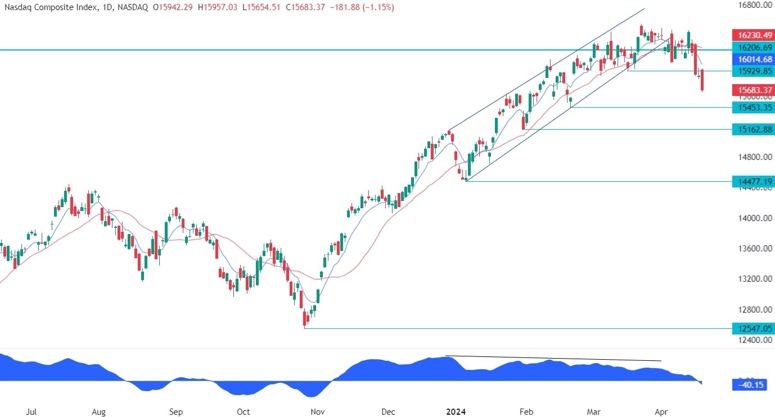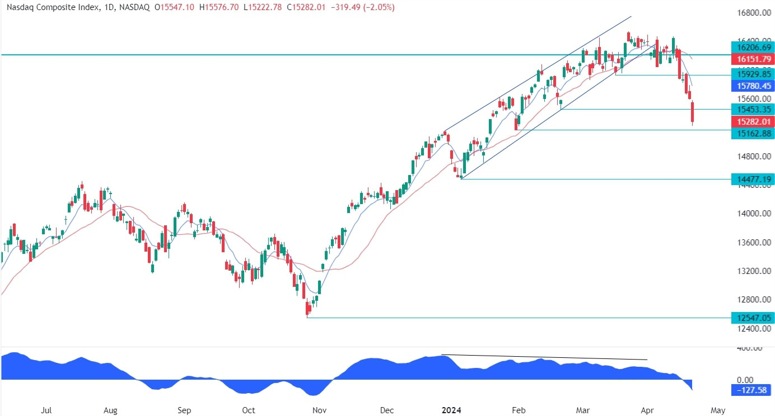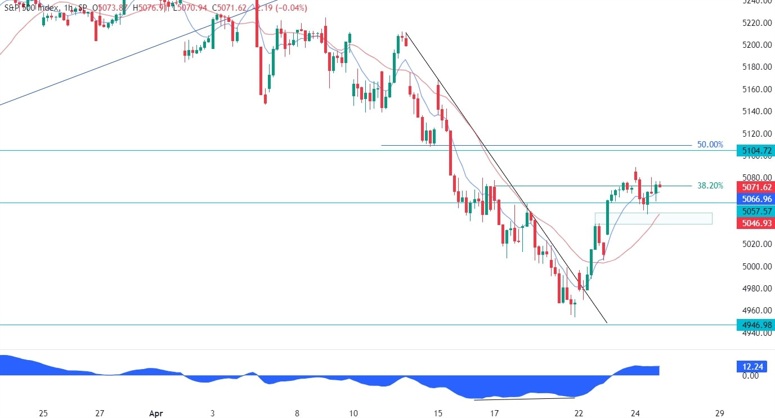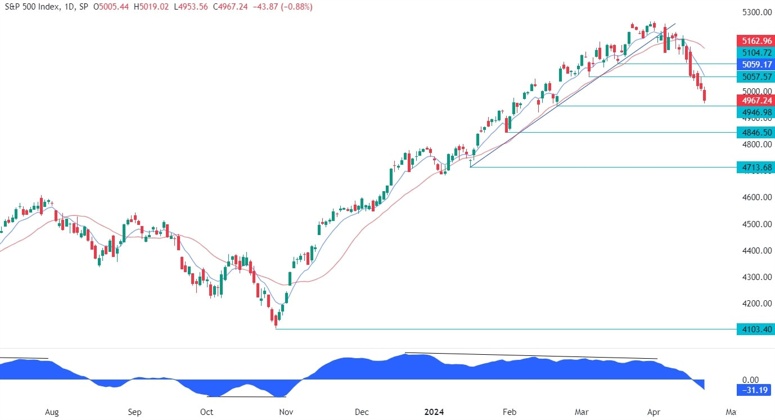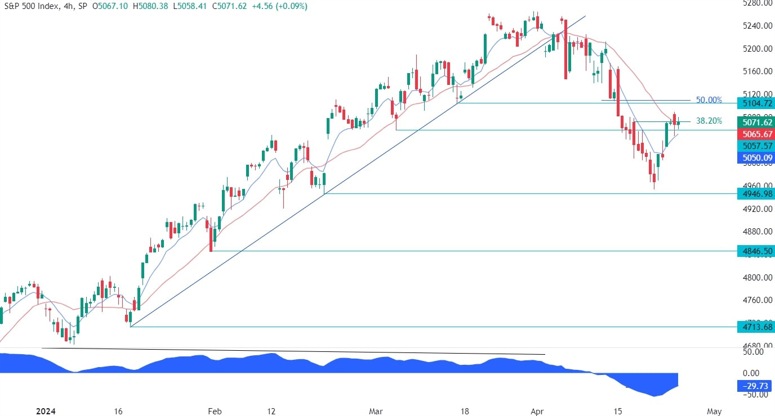SSE Composite Index (上证综指) Shanghai Composite Index
Parent Index
NA
Indices informations
Listed Exchanges
| Shanghai Stock Exchange |
Related Instuments
| SSE Mega-Cap |
| SSE 50 |
| SSE MidCap |
| SSE 180 |
| SSE 380 |
Sector Represented
| Real Estate |
| Insurance |
| Utilities |
| Industries |
| Retailers |
Indices
- BSE SENSEX
- CAC 40
- CBOE NASDAQ-100 Volatility Index (VXN)
- CBOE Volatility Index (VIX)
- China50-FTSE China A50 Index
- DAX
- DAX PERFORMANCE-INDEX-GDAXI
- DE40-Germany 40 Index DAX
- Dollar Index USDX-DXY-DX-Dixie
- Dow Jones Industrial Average-DJIA
- EURO STOXX 50 SX5E
- FTSE 100 Index-UK100 Index
- Germany 30
- Hang Seng Index
- IBEX 35-Spain 35
- NASDAQ Composite
- NASDAQ-100
- Nikkei 225
- Russell 2000 Index
- S&P/ASX 200
- Singapore Blue Chip Index-STI
- Swiss Market Index (SMI) Switzerland Blue Chip Index
- TecDax Price Index
- TECHDE30-Germany Tech 30 Index
- US Tech 100 Index UT100
- US2000-US Small Cap 2000 Index
- US30-US Wall Street 30 Index
- US30M- US Wall Street 30 Index M
- US500-S&P 500 (GSPC, INX, SPX)
- US500-US SPX 500 Index
- US500M-S&P 500 Mini
- All Ordinaries
- Amsterdam Exchange Index AEX index
- ATX-Austrian Traded Index (ATX)
- BEL 20
- BELEX15
- BIRS
- BIST-Borsa Istanbul
- CROBEX
- EGX 30 Index Egypts Leading Stock Market Index
- FTSE All-Share Index
- FTSE Bursa Malaysia Index-KLCI Index
- FTSE MIB-FTSE MIB 40
- Índice Bursátil Caracas (IBC)
- Índice Bursátil de Capitalización-The General Index
- Indice de Precios y Cotizaciones
- KOSPI
- KSE 100 Index
- MDAX
- MERVAL
- MICEX-The MOEX Russia Index
- OBX Index
- OMX Copenhagen 20 (OMXC20)
- OMX Helsinki 25 (OMXH25)
- OMX Stockholm 30 (OMXS30)
- PSE Index (PSEi)
- PSI20-PSI-20
- S&P/NZX 50 Index
- S&P/TSX 60
- S&P/TSX Composite Index
- S&P/TSX Venture Composite Index
- SOFIX
- SSE Composite Index (上证综指) Shanghai Composite Index
- Straits Times Index (STI)
- SZSE Component Index (深证成指)
- TA-125 Tel Aviv 125 Index
- Taiwan Capitalization Weighted Stock Index (TAIEX)
- The Indice de Precio Selectivo de Acciones- IPC
- CBOE NASDAQ-100 BuyWrite Index (BXN)
- Hang Seng China H-Financials Index
- IBOVESPA-The Bovespa Index-Brazil Stock Exchange Index
- NASDAQ Financial-100
- SDAX – Small cap
- TecDAX
- aaa
- Amex Gold BUGS Index
- Amex Oil Index
- AScX index – Small cap
- ASE Weighted Index
- Athex 20
- Barrons 400 Index
- BELEXline
- BET-10
- BSE DCI
- BSE FCI
- BUMIX – Mid cap
- BUX – Large cap
- CA60-Canada 60 Index
- CAC All Share
- CAC All-Tradable
- CAC Large 60
- CAC Mid & Small
- CAC Mid 60
- CAC Next 20
- CAC Small
- Capital Markets Index
- CASPI
- CBOE DJIA BuyWrite Index (BXD)
- CBOE S&P 500 BuyWrite Index (BXM)
- CBV Index
- CBV Real Estate Index
- CECEEUR
- Central European Blue Chip Index – Regional large cap
- ChinaH-Hong Kong China H-shares Index
- COLCAP
- Colombo Stock Exchange Sector indices (CSE Sectors)
- CROBIS
- CSC X
- CSE 30
- CSE50
- CSI
- CSI 100 Index (中证100指数)
- CSI 300 Index (沪深300指数)
- Dow Jones Global Titans 50
- Dow Jones Transportation Average
- Dow Jones Utility Average
- DSE
- DSEX
- DSM200
- EGX 100 Index
- EGX 50 Index
- EGX 70 Index
- ERS10
- FIRS
- FT 30 Index
- FTSE 350 Index
- FTSE AIM All-Share Index
- FTSE AIM UK 50 Index
- FTSE All-World index series
- FTSE Fledgling Index
- FTSE Italia Mid Cap
- FTSE MID 250 Index
- FTSE SmallCap Index
- FTSE techMark Index
- FTSE/Athex Large Cap
- FTSE/JSE All Share Index
- FTSE/JSE Top 40 Index
- FTSEurofirst 300 Index
- FTSEurofirst Euro Supersector Indices
- GSE All-Share Index
- Hang Seng China Enterprises Index
- Hang Seng China-Affiliated Corporations Index
- HK50
- IDX Composite
- IGBC
- IPSA
- ISEQ 20-The Ireland Overall Stock Exchange Index-ISEQ20
- IT40-Italy 40 Index
- Jakarta Islamic Index (JII)
- Jamaica Stock Exchange (JSE)
- KASE
- KMI 30 Index
- KOSDAQ
- KSE All Share Index
- KSE-30 Index
- Kuala Lumpur Composite Index
- LASI
- LQ-45
- LuxX Index – Luxembourg Stock Exchange
- MADEX index
- Madrid Stock Exchange General Index
- MASI index
- MESDAQ
- MIDDE50-Germany Mid 50 Index
- MIDDE60-Germany Mid 60 Index
- Milanka Price Index (MPI)
- MSCI EAFE
- MSCI GCC
- MSCI Hong Kong Index
- MSCI World
- MSM-30
- NEPSE Index – Nepal Stock Exchange
- NETH25
- NIFTY 100 LOW VOLATILITY 30
- NIFTY 200
- NIFTY ALPHA 50
- NIFTY BANK
- NIFTY CPSE
- NIFTY ENERGY
- NIFTY FINANCE
- NIFTY FMCG
- NIFTY INDIA CONSUMPTION
- NIFTY INFRA
- NIFTY IT
- NIFTY MEDIA
- NIFTY METAL
- NIFTY MIDCAP 100
- NIFTY MIDCAP 50
- NIFTY MIDCAP LIQUID 15
- NIFTY MIDSMALLCAP 400
- NIFTY MNC
- NIFTY Next 50
- NIFTY PHARMA
- NIFTY PSE
- NIFTY PSU BANK
- NIFTY PVT BANK
- NIFTY REALTY
- NIFTY SERV SECTOR
- NIFTY SMALLCAP 100
- NIFTY SMALLCAP 250
- NIFTY SMALLCAP 50
- NIFTY100 EQUAL WEIGHT
- NIFTY100 LIQUID 15
- NIFTY200 QUALITY 30
- NIFTY50 EQUAL WEIGHT
- Nor25-Norway 25 Index
- NSE 30 Index
- NSE All Share Index
- NSE NIFTY 50
- NYSC Arca Major Market Index
- NYSE American Composite Index
- OMX Iceland 15 (discontinued)
- OMX Iceland 6
- OMX Stockholm PI (OMXSPI)
- OMX Vilnius (OMXV)
- OTCM QX ADR 30 Index
- Palisades Water Index (ZWI)
- PFTS index
- Philadelphia Gold and Silver Index
- PHLX Semiconductor Sector
- PSE All Shares Index
- PSE Financials Index
- PSE Mining and Oil Index
- PSI/GERAL
- PX Index
- RTS Index (RTSI)
- Russell 1000
- Russell 2500
- Russell 3000
- Russell MidCap
- Russell Small Cap Completeness
- S&P 100
- S&P 1500
- S&P Asia 50
- S&P BSE 500
- S&P Europe 350
- S&P Global 100
- S&P Global 1200
- S&P Latin America 40
- S&P MidCap 400
- S&P MidCap 400/BARRA Growth
- S&P MidCap 400/BARRA Value
- S&P SmallCap 600
- S&P SmallCap 600/BARRA Growth
- S&P SmallCap 600/BARRA Value
- S&P Vietnam 10 Index
- S&P/ASX 20
- S&P/ASX 300
- S&P/ASX 50
- SA40-South Africa 40 Index
- SBF 120
- SE30-Sweden 30 Index
- SET Index
- SET100 Index
- SET50 Index
- Slovak Share Index
- SMI Expanded
- SMI MID
- SPBLPGPT
- SSE 180 Index (上证180指数)
- SSE 50 Index (上证50指数)
- STOXX Europe 600
- SWI20-Switzerland 20 Index
- Swiss Leader Index (SLI)
- Swiss Performance Index (SPI)
- SZSE 100 Index (深证100指数)
- SZSE 200 Index (深证200指数)
- SZSE 300 Index (深证300指数)
- TA-35 Index
- TA-90
- Tadawul
- TEDPIX
- TEPIX
- The Global Dow
- The GSE Composite Index.
- THETAUSD Theta Network Token vs US Dollar
- TOPIX
- Trinidad and Tobago Stock Exchange (TTSE)
- UBS 100 Index
- Value Line Composite Index
- VN Index
- WIG-Warszawski Indeks Giełdowy
- WIG30
- Wilshire 4500
- Wilshire 5000
- Zimbabwe Industrial Index
- Zimbabwe Mining Index
The SSE Composite Index: An Overview
The SSE Composite Index, also known as the Shanghai Composite Index, is a stock market index that tracks the performance of all stocks listed on the Shanghai Stock Exchange (SSE). It is one of the most widely followed equity indices in China and serves as a benchmark for the overall performance of the Chinese stock market.
Components and Calculation
The SSE Composite Index includes all major companies listed on the Shanghai Stock Exchange, covering a wide range of sectors including finance, manufacturing, technology, and consumer goods. As of 2021, it consists of more than 1,500 stocks.
The index is calculated using a weighted average methodology, where each stock’s weight is determined by its market capitalization. This means that larger companies have a greater impact on the index’s movement compared to smaller ones. The index is denominated in Chinese yuan (CNY).
Importance and Significance
The SSE Composite Index plays a crucial role in the Chinese financial markets. It provides investors and market participants with a comprehensive gauge of the overall performance and sentiment of the Chinese stock market. It is used by both domestic and international investors as a reference point when making investment decisions related to Chinese equities.
Additionally, the index is closely monitored by policymakers, economists, and analysts as it reflects the health and stability of the Chinese economy. Changes in the index’s value can indicate trends and shifts in investor sentiment, which can influence market expectations and government policies.
Historical Performance
Over the years, the SSE Composite Index has experienced significant fluctuations in line with various economic and geopolitical factors. It witnessed rapid growth during China’s economic boom in the early 2000s but also faced significant declines during periods of financial crises and market corrections.
In recent years, the index has shown resilience and has been on an upward trajectory, reflecting China’s robust economic growth and increasing investor confidence. However, it is important to note that past performance does not guarantee future results, and investing in the stock market carries inherent risks.
Investing in the SSE Composite Index
Investors can gain exposure to the performance of the SSE Composite Index through various financial instruments such as exchange-traded funds (ETFs), mutual funds, and index futures. These investment vehicles allow investors to participate in the overall movement of the Chinese stock market without holding individual stocks.
Before investing, it is crucial for individuals to conduct thorough research, understand their risk tolerance, and consult with a financial advisor to make informed investment decisions.
Conclusion
The SSE Composite Index serves as a vital indicator of the Chinese stock market’s performance and acts as a barometer for the overall health of the Chinese economy. As China continues to play a significant role in the global economy, monitoring and understanding the SSE Composite Index can provide valuable insights for investors and analysts alike.
SSE Composite Index: Meaning, Calculation, History
The SSE Composite Index, also known as the Shanghai Composite Index, is a stock market index that tracks the performance of all the stocks listed on the Shanghai Stock Exchange (SSE). It is one of the most widely followed benchmarks for the Chinese stock market and provides a comprehensive overview of the overall market sentiment and performance.
Calculation Method
The SSE Composite Index is calculated using a free-float market capitalization-weighted methodology. This means that the index takes into account the total market value of the companies listed on the Shanghai Stock Exchange, adjusted for the number of shares available for trading by the public. The larger the company’s market capitalization, the more influence it has on the index’s movements.
To calculate the index, the total market capitalization of all the constituent stocks is divided by a divisor. The divisor is adjusted periodically to account for changes in the market or in the composition of the index. This ensures that the index remains representative of the overall market without being affected by stock splits, dividends, or other corporate actions.
History
The SSE Composite Index was first introduced on July 15, 1991, with a base value of 100. Since then, it has become an essential tool for investors, analysts, and economists to gauge the performance and trends of the Chinese stock market.
The index has gone through several significant milestones throughout its history. In 2006, it crossed the 1,000-point mark for the first time, reflecting the rapid growth of the Chinese economy and its stock market. In 2007, the index reached its all-time high of over 6,000 points, driven by a surge in liquidity and investor optimism.
However, the index also experienced notable declines during periods of market turbulence. For instance, during the global financial crisis in 2008, it plummeted by nearly two-thirds from its peak. Similarly, in 2015, a sharp correction in the Chinese stock market led to a significant drop in the SSE Composite Index.
Over the years, the SSE Composite Index has attracted both domestic and international investors due to its diverse range of listed companies, which represent various sectors of the Chinese economy. It serves as an important barometer of China’s economic health and is closely monitored by market participants worldwide.
Conclusion
The SSE Composite Index plays a crucial role in tracking the performance of the Chinese stock market. By providing a comprehensive overview of the Shanghai Stock Exchange, it serves as an essential tool for investors, policymakers, and economists to assess market sentiments, trends, and overall economic health. The index’s calculation methodology ensures that it remains representative of the market and adjusts for changes in the composition of the index. As China’s economy continues to grow and evolve, the SSE Composite Index will remain a key indicator of its financial markets.
SSE Composite Index Key Data
The SSE Composite Index, also known as the Shanghai Composite Index, is a stock market index that represents the performance of all the stocks listed on the Shanghai Stock Exchange (SSE). It is one of the most widely recognized benchmarks for the Chinese stock market and is closely watched by investors both within China and globally.
Index Composition
The SSE Composite Index covers a broad range of companies across various sectors, including financials, industrials, technology, consumer goods, healthcare, and more. As of its latest update, it consists of around 1,600 stocks listed on the Shanghai Stock Exchange.
Calculation Methodology
The index uses a weighted market capitalization methodology to calculate the index value. This means that the larger the market capitalization of a company, the higher its weight in the index. The calculation takes into account factors such as free-float market capitalization, shares outstanding, and price changes.
Key Statistics
- Base Value: The base value of the SSE Composite Index was set at 100 on July 15, 1991. This allows for easier comparison of historical performance.
- All-Time High: The index reached its all-time high of XXXX points on XXXX. This milestone reflects the overall strength and growth of the Chinese stock market.
- All-Time Low: The index’s lowest point was XXXX, recorded during the global financial crisis in XXXX. This highlights the vulnerability of stock markets to economic downturns.
- Market Capitalization: The total market capitalization of all stocks included in the SSE Composite Index is approximately XXXX trillion yuan. This reflects the significant size and importance of the Chinese stock market.
- Market Performance: The SSE Composite Index provides a valuable measure of the overall performance of the Chinese stock market. It enables investors to track the market’s trend and assess the health of the economy.
Significance
The SSE Composite Index plays a crucial role in attracting both domestic and international investors to the Chinese stock market. It serves as a barometer for market sentiment, allowing investors to gauge the direction of the market and make informed decisions. Additionally, it facilitates the creation of various financial products like index funds and exchange-traded funds (ETFs), which enable investors to gain exposure to the broader Chinese equity market.
Overall, the SSE Composite Index provides a comprehensive snapshot of the performance of the Shanghai Stock Exchange, making it an essential tool for investors, analysts, and financial institutions operating in China.
Fundamental Summary
- Coming soon!!

